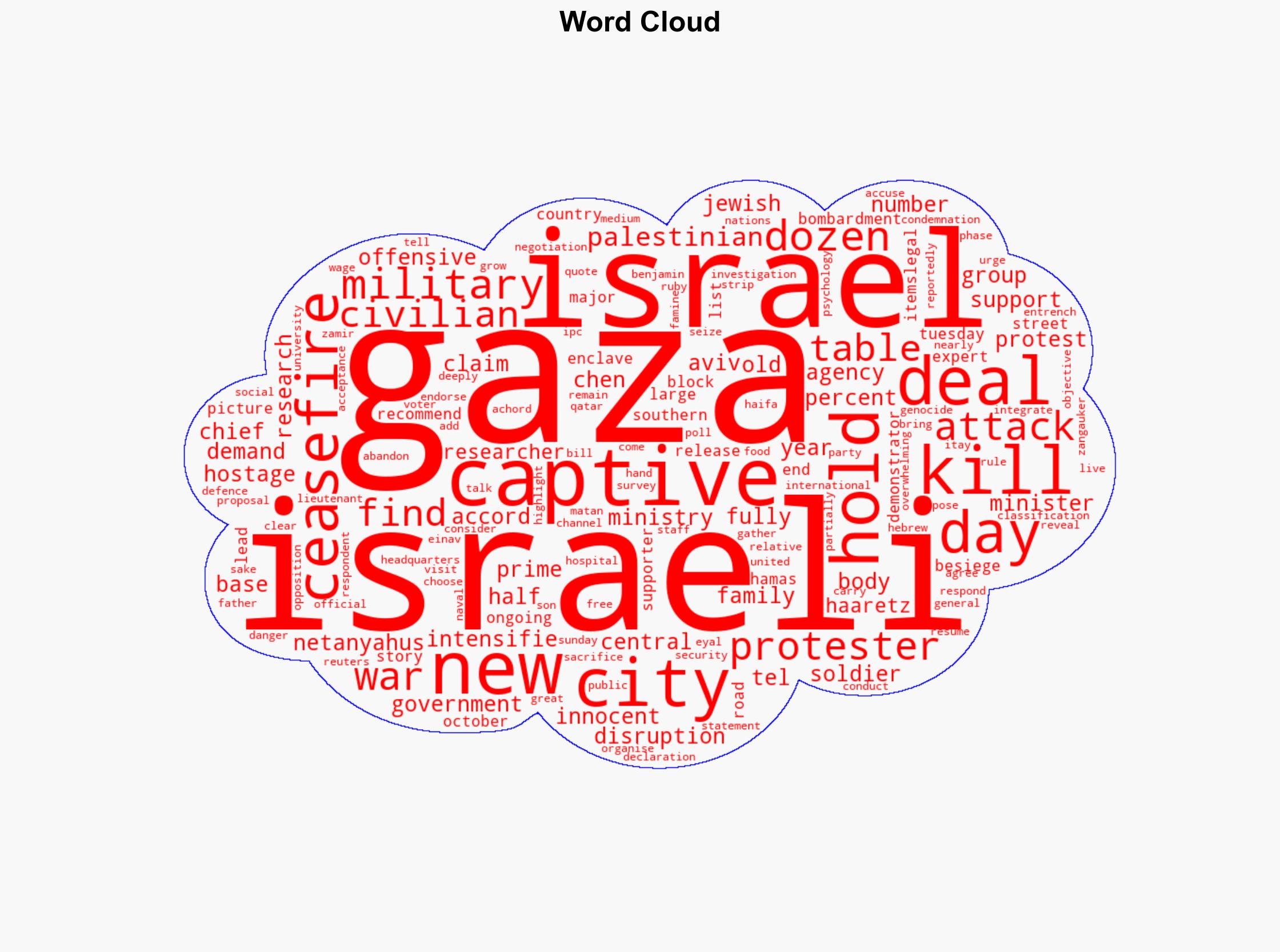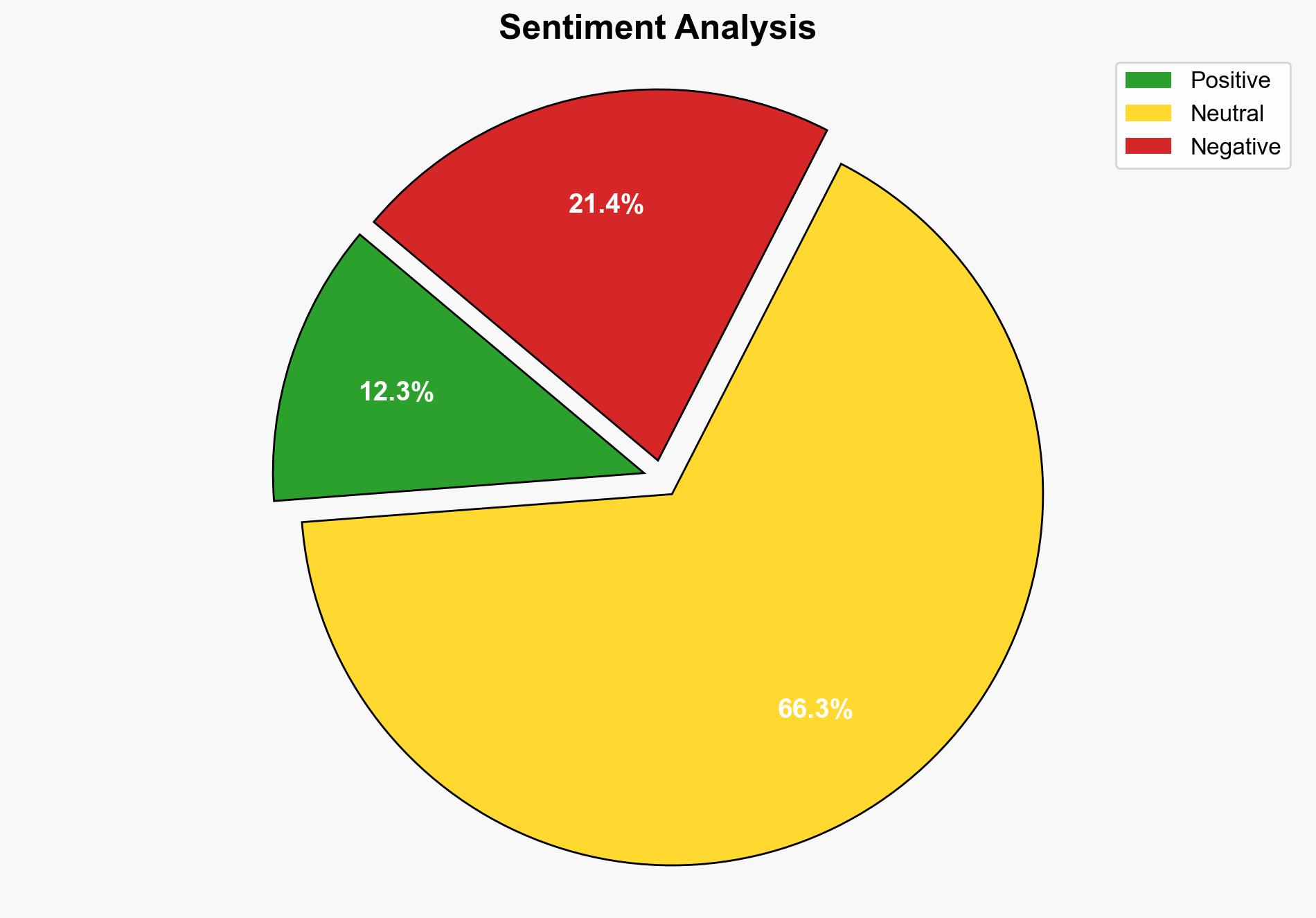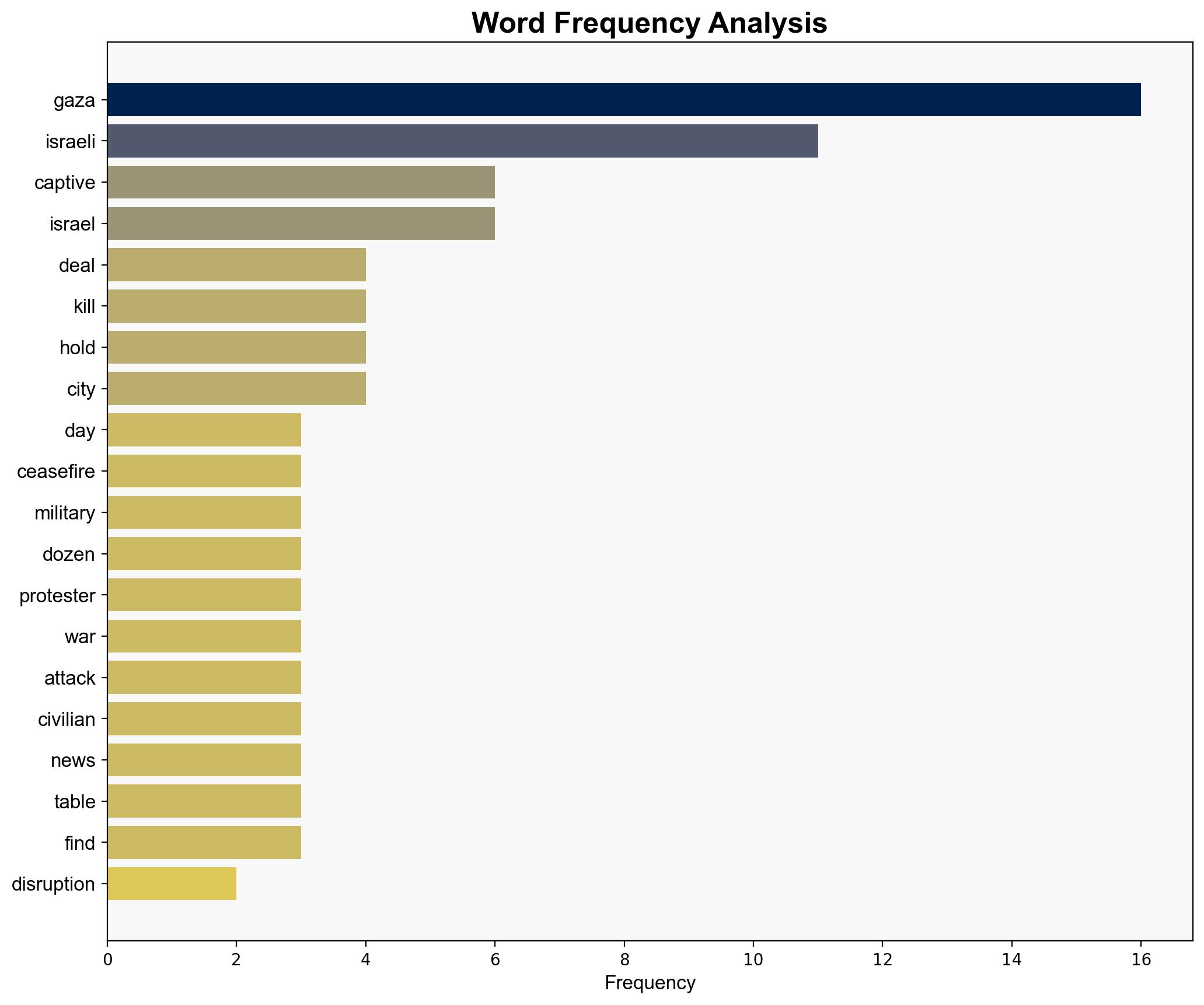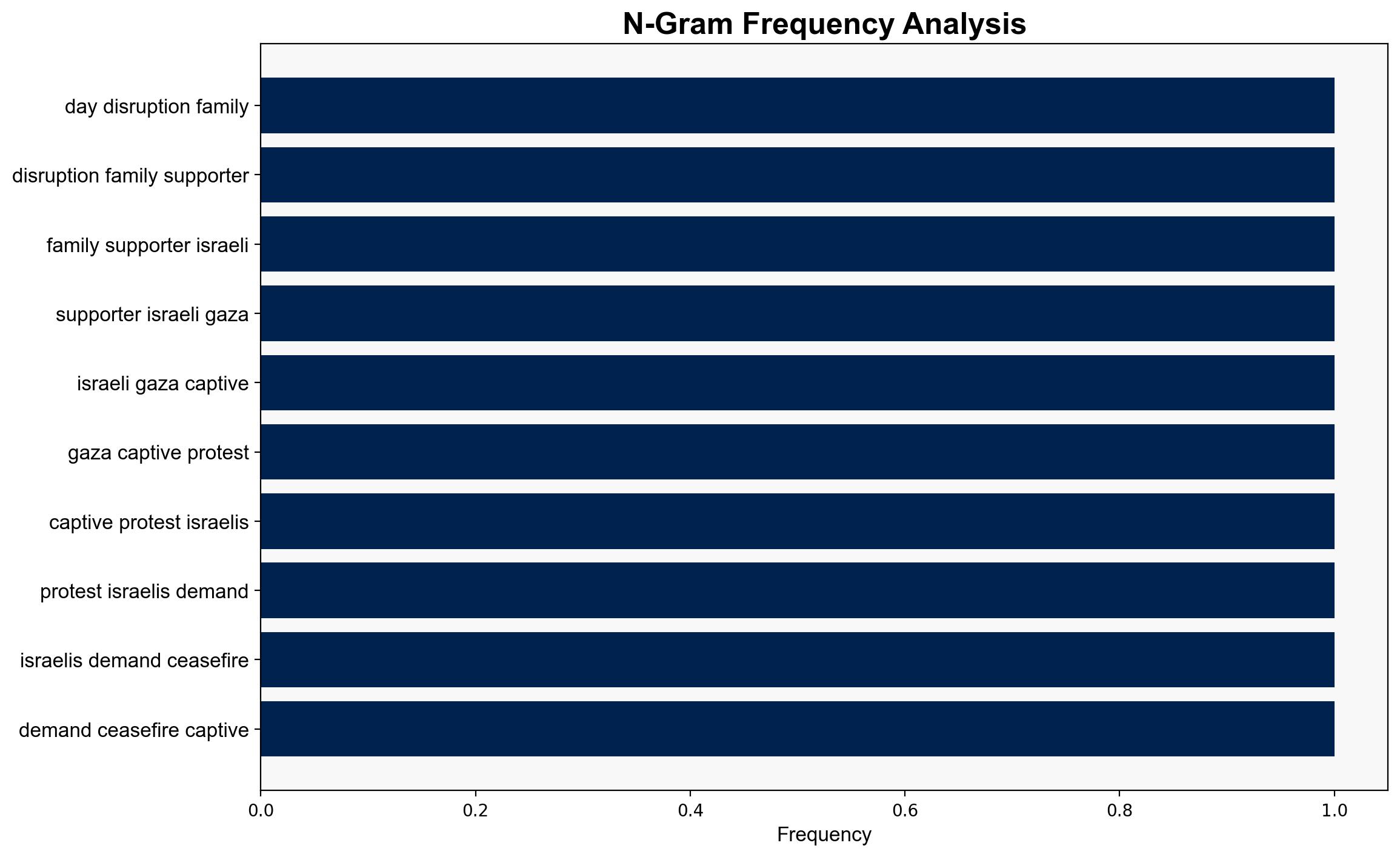Day of Disruption Families supporters of Israeli Gaza captives protest – Al Jazeera English
Published on: 2025-08-26
Intelligence Report: Day of Disruption Families supporters of Israeli Gaza captives protest – Al Jazeera English
1. BLUF (Bottom Line Up Front)
The most supported hypothesis is that the protests are a direct response to the Israeli government’s perceived inaction or ineffective handling of the hostage situation in Gaza, compounded by the intensifying military operations. Confidence in this hypothesis is moderate due to the complex interplay of domestic and international pressures. Recommended action includes diplomatic engagement to facilitate negotiations and mitigate further escalation.
2. Competing Hypotheses
Hypothesis 1: The protests are primarily driven by families of captives who feel abandoned by the Israeli government, demanding a ceasefire and negotiations for the captives’ release. This hypothesis is supported by the direct involvement of families and their public statements against the government.
Hypothesis 2: The protests are part of a broader political movement against the Israeli government’s military strategy in Gaza, reflecting a growing domestic opposition to the ongoing conflict. This hypothesis is supported by the participation of opposition party supporters and the broader public sentiment revealed in recent polls.
3. Key Assumptions and Red Flags
– Assumption: The Israeli government has not prioritized negotiations for the captives’ release.
– Red Flag: The lack of clear information on the status of negotiations or any potential deals.
– Potential Bias: Public opinion data may reflect a skewed sample or be influenced by recent events.
– Deception Indicator: Official statements may downplay the extent of domestic opposition to maintain a unified front.
4. Implications and Strategic Risks
– Continued protests could exacerbate political instability within Israel, potentially leading to a shift in government policy or leadership.
– Escalation of military operations in Gaza poses risks of international condemnation and potential sanctions.
– The humanitarian crisis in Gaza could lead to increased regional tensions and involvement from neighboring countries.
– Psychological impact on the Israeli public may lead to decreased morale and increased polarization.
5. Recommendations and Outlook
- Engage in diplomatic efforts to resume negotiations for the captives’ release, involving international mediators if necessary.
- Monitor public sentiment and adjust communication strategies to address domestic concerns.
- Scenario Projections:
- Best Case: Successful negotiation leads to the release of captives, reducing domestic unrest.
- Worst Case: Escalation of conflict results in increased casualties and international isolation.
- Most Likely: Protests continue with moderate intensity, pressuring the government to reconsider its strategy.
6. Key Individuals and Entities
– Benjamin Netanyahu
– Einav Zangauker
– Ruby Chen
– Eyal Zamir
– Ron Gerlitz
7. Thematic Tags
national security threats, regional focus, political instability, humanitarian crisis





